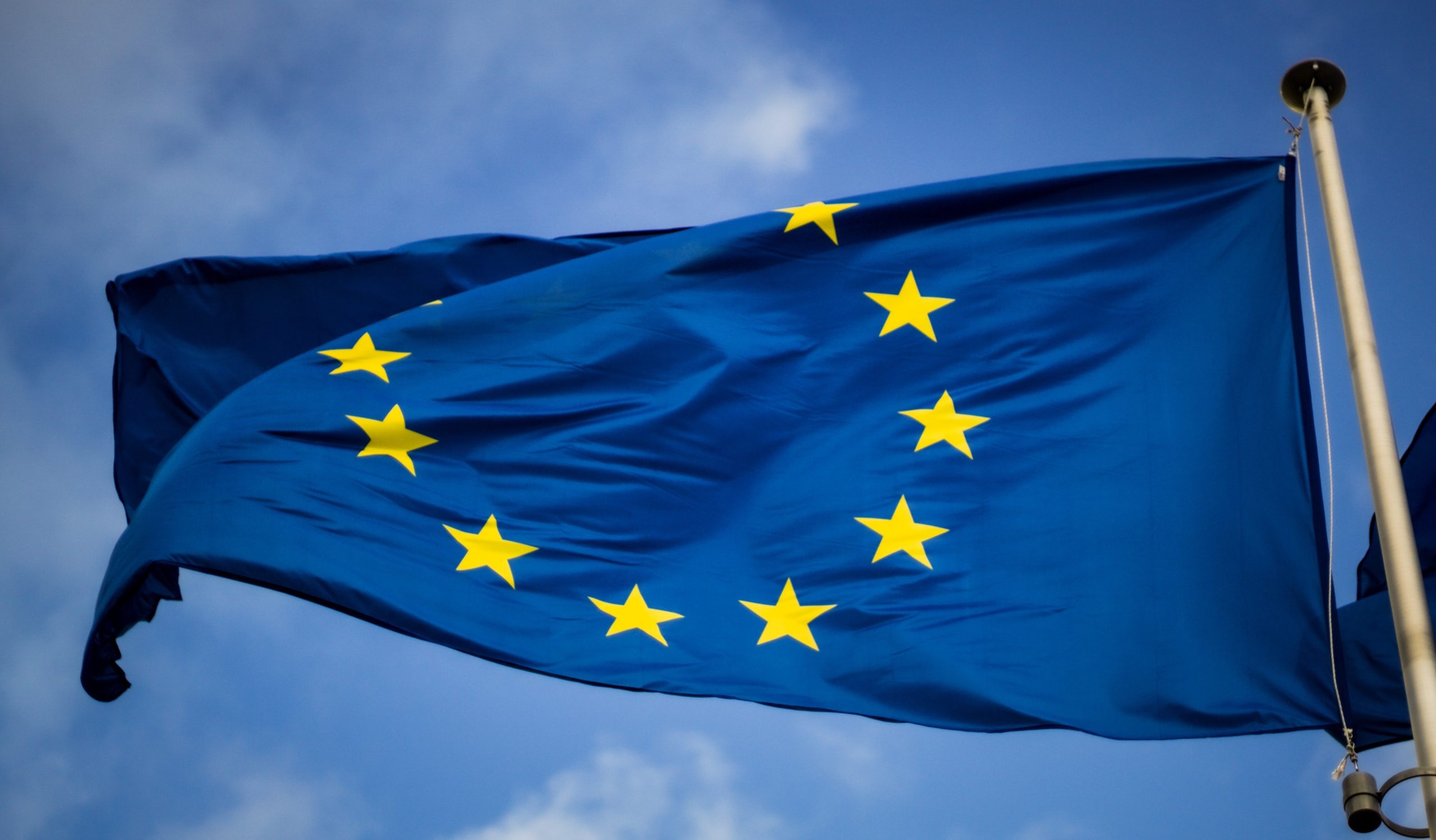(This is cross-posting from www.opendemocracy.net)
Article 3 of the Regulation defined the legal foundations of net neutrality in the EU, including the operators’ obligation to “treat all traffic equally.”
Partial map of the Internet based on the January 15, 2005 data of the Opte Project – Originally from the English Wikipedia. Wikicommons. Some rights reserved.
Net neutrality is the principle mandating that internet traffic be managed in a non-discriminatory fashion, in order to fully safeguard internet users’ rights.
Starting from 30 August 2016, all EU and EEA members have finally obtained guidance on how to implement sound net neutrality provisions. The path has been tortuous and uneasy, starting from not neutrality, reaching an open Internet compromise and, finally, attaining net neutrality protections. In this article, we briefly recount how net neutrality evolved in Europe, and the significant progress achieved by the recently adopted net neutrality ‘Guidelines’.
A brief history of net neutrality in Europe
Net neutrality debates in Europe date back to the 2009 discussion of the Telecoms Package revision. At the time, EU policymakers hoped that competition and transparency would suffice to avoid undue discriminatory Internet Traffic Management (ITM). Notably, the Universal Service Directive demanded transparency of information regarding the conditions limiting access and use of applications while the Framework Directive’s ultimate aim was to foster the regulation of electronic communications by competition law only. Such an approach has been proven wrong by a number of quite blatant examples, documented in various consultations as well as empirical research jointly conducted by the Body of European Regulators of Electronic Communications (BEREC) and the European Commission (EC), in 2012.
Evidence was pointing to what the Council of Europe (CoE) member states had already scented in 2010, i.e. that discriminatory ITM might adversely affect the end-users’ right to access and share content and applications online, thus unduly limiting the circulation of information and innovation. For this reason, a framework to provide guidance on what may constitute reasonable ITM was deemed useful by CoE members. Elements to build such a framework were commissioned in 2013, in order subsequently to develop the CoE Recommendation on net neutrality.
“A wide range of civil society organisations, academics and business players were more cautious, stressing the existence of several potential loopholes in the text.”
EU Parliament called “on the Commission to propose legislation to ensure net neutrality” and, in September 2013, the EC published its proposed draft Telecom Single Market Regulation, including highly controversial net neutrality provisions. The provisions were subsequently amended and, after more than two years of negotiations, the European Parliament approved Regulation 2015/2120 enshrining “common rules to safeguard equal and non-discriminatory treatment of traffic.” When the Regulation was approved, EU Commissioners welcomed the new rules as a great success, while a wide range of civil society organisations, academics and business players were more cautious, stressing the existence of several potential loopholes in the text.
Open internet and the n-word prank
After years of extenuating negotiations, EU policymakers opted for mitigating net neutrality into a less controversial “open internet”, avoiding mentioning net neutrality in the text. Besides the indubitable curiosity of cheering the adoption of “net neutrality rules for the first time in Europe” without even mentioning net neutrality in the legal text, the Regulation was accompanied by critiques regarding the imprecision of various provisions, whose official interpretation was deferred by the EU co-legislators to BEREC. Article 5(3) of the 2015 Regulation forced BEREC to elaborate Guidelines aimed at guaranteeing the “consistent application of the Regulation” thus avoiding fragmentation and, even worse, abusive conducts.
“Only when enforcement by national authorities is tested, will we know the cat’s fate.”
BEREC was given nine months to draft, consult and finalise the Guidelines, hence the 30 August 2016 deadline. In the meantime, the Regulation came into effect in April but was largely ignored by national regulators in the absence of the final Guidelines. It has been a year of “phoney war” on net neutrality while the legal text has been ignored in practice. Call it ‘Schrodinger’s net neutrality’ – net neutrality is both alive and dead in Europe, and only when enforcement by national authorities is tested, will we know the cat’s fate.
In spite of the notable absence of the term ‘net neutrality’ in the 2015 Regulation, which simultaneously and rather schizophrenically[1] was included by governments in the CoE Recommendation, it is important to stress that Article 3 of the Regulation defined the legal foundations of net neutrality in the EU. Notably, it explicitly recognised that
“all end-users shall have the right to access and distribute information and content, use and provide applications and services, and use terminal equipment of their choice, irrespective of the end – user’s or provider’s location or the location, origin or destination of the information, content, application or service, via their internet access service.”
This right is complemented by the operators’ obligation to “treat all traffic equally” implementing reasonable traffic management that should be “transparent, non-discriminatory and proportionate” and, critically, “shall not be based on commercial considerations but on objectively different technical quality of service requirements of specific categories of traffic.”
The Regulation explicitly prohibited undue blocking and throttling but avoided a clear stance on three key net neutrality issues:
– zero rating practices (free data to use in approved partners’ apps of the operator),
– acceptable ITM measures to cope with congestion phenomena and, finally,
– specialised services (high speed lanes with higher Quality of Service but for higher prices).
Two of these issues represented uncharted territory on which very little guidance existed at the time of the publication of the Regulation. First, zero rating practices, which consist in the imposition of reduced data caps, i.e. limits to monthly data volumes, and the parallel exemption of selected applications from such caps. Second, specialised services are services that differ from Internet access services, having enhanced features such as Quality of Service or security, in order to be optimised for the transmission of specific content and/or services.
The Regulation delegated to BEREC the task of issuing specific guidelines to the national regulators that compose the ‘Body’, in order to ensure homogenous interpretation of the rules and avoid operators eluding net neutrality safeguards.
BEREC the bold
BEREC organised a six-week public consultation on the draft Guidelines that stimulated a record 481,547 contributions, mostly supporting strong net neutrality protections. Meanwhile, major EU operators, such as Deutsche Telekom, BT Group and Orange issued a “5G Manifesto” threatening not to invest in next-generation 5G mobile networks, unless the proposed net neutrality guidelines were mitigated.
The BEREC Guidelines, hailed as a significant victory for net neutrality advocates, have finally provided a clear interpretation of the Regulation with regard to traffic management practices; specialised services; transparency with regard to Internet access quality; and “commercial practices”, such as zero rating. Importantly, BEREC decided to call things by their name and confidently named the document “BEREC Guidelines on the Implementation by National Regulators of European Net Neutrality Rules.” [emphasis added]
“The Guidelines have a critical influence on the implementation of net neutrality rules.”
Although the Guidelines are a non-binding document, from a juridical perspective, they represent the official document based on which national regulators should interpret the Regulation, thus harmonising its implementation. Therefore, the Guidelines have a critical influence on the implementation of net neutrality rules. Notably, should any legal entity or natural person disagree with a national regulator’s interpretation of the rules according to the guidelines, it would be possible to seek a binding interpretation from the EU Court of Justice that would have erga omnes effects in all member states.
With regard to zero rating, the Guidelines provide a ‘middle way’, advising regulators to treat violations more strictly where they were applied to specific applications (e.g. WhatsApp) rather than a class of applications (e.g. all messaging apps), and to treat zero rating by dominant mobile providers more strictly. Notably, they point out that:
“price differentiation between individual applications within a category has an impact on competition between providers in that class…and thereby undermine the goals of the Regulation [more]than would price differentiation between classes of application.”
Although the Guidelines do not ban zero rating, they affirm that the “practice is more likely to limit the exercise of end-user rights in a situation where, for example, many end-users are concerned and/or there are few alternative offers and/or competing ISPs for the end-users to choose from” while pointing out that “the lower the data cap, the stronger such influence is likely to be.”
The Guidelines define three different levels of traffic management, which justify the use of different practices. Such ITM taxonomy is a unique feature of the Guidelines, distinguishing the regular, reasonable and exceptional ITM. Regular ITM consists of application agnosticism and concretely means that Internet traffic is managed regardless of the nature of the specific applications or user.
“Importantly such differentiation cannot be based on the previous monitoring of the communications’ content.”
Reasonable traffic management allows differentiation based on objective technical requirements, such as latency, jitter and packet loss. Importantly such differentiation cannot be based on the previous monitoring of the communications’ content. Lastly, exceptional traffic management allows operators to use discriminatory measures in compliance with those that are generally considered as legitimate exceptions to net neutrality , i.e. network integrity and security, congestion management and the enforcement of legislative measures.
Lastly, the Guidelines define the conditions according to which specialised services can be offered, coexisting with Internet access services, amongst which the existence of sufficient network capacity is the most important. Notably, BEREC has very clearly affirmed that no circumstances justify the provision of specialised services at the expense of Internet access services.
Collaborating to work on future net neutrality regulation
To facilitate the harmonisation impact of the Guidelines, BEREC plans to “foster the ongoing exchange of experiences by [national regulators]of their implementation of the Regulation.” As such, starting from 2017, the EU and EEA regulators will publish annual reports in order to share how they have implemented the net neutrality rules in accordance to the Guidelines. The reports will allow BEREC to organise practical evaluations of the Guidelines implementation and, should it be necessary, to schedule a review and update of the Guidelines in order to reflect technology and infrastructure evolution. The Guidelines seem a good starting point for long-term collaborative work.
[1] An alternative explanation to schizophrenia may be the lack of interest that lobbyists manifest with regard to policymaking taking place within the CoE, due to the very limited economic consequences that CoE policies may determine. Surely, BEREC is a much more important regulatory venue than the CoE.





